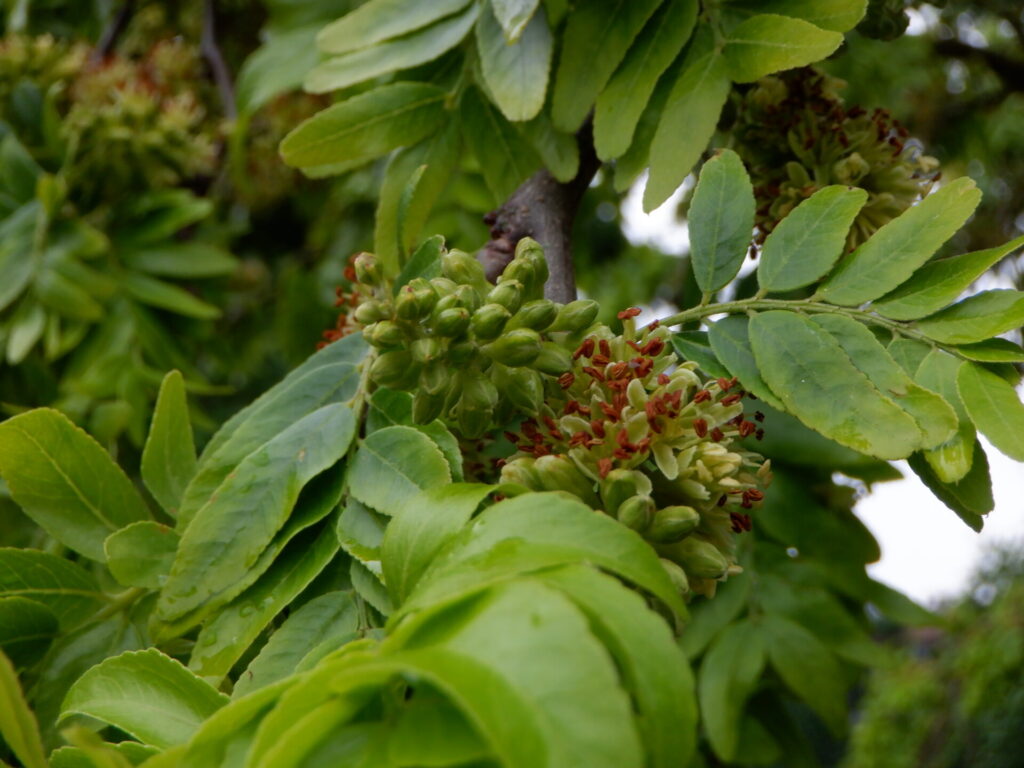Honey locust is a deciduous tree of the legume Fabaceae family (Gleditsia triacanthos). It has
compound leaves that give the foliage a lacy effect that turn yellow in autumn. The sweet smelling flowers
attract the bees in spring. The reddish-brown seed pods can grow to a foot long. They contain a sweet, sticky pulp with bean-like seeds. The sweet and fleshy pulp of the bean pods can be eaten raw or extracted and used in a variety of ways. The fruits pods of the honey locust are edible but note that the black locust pods are toxic (though it’s flowers are edible). The thorns are rock hard and were once used as nails. The tree is capable of reaching 100 feet in height. Thornless and fruitless varieties have been developed by the horticultural industry and are used extensively in landscaping.






